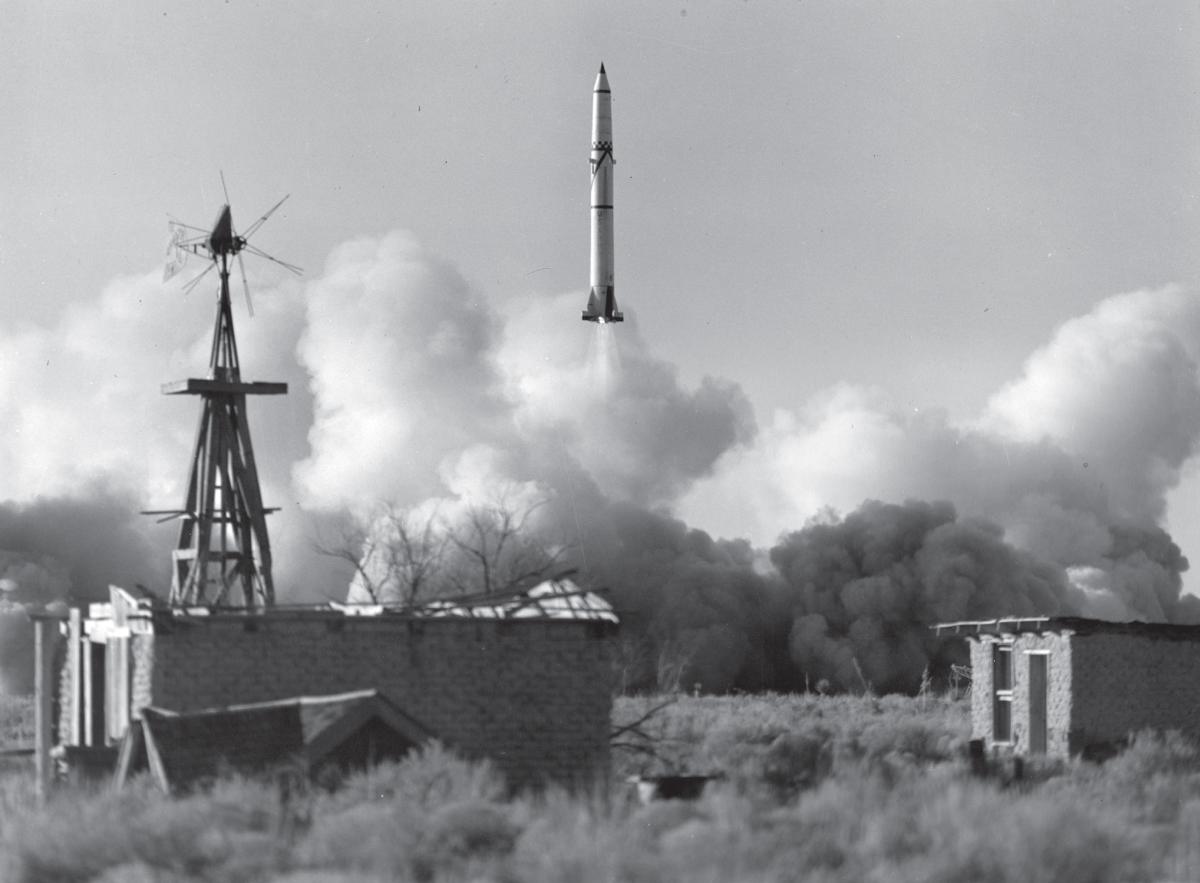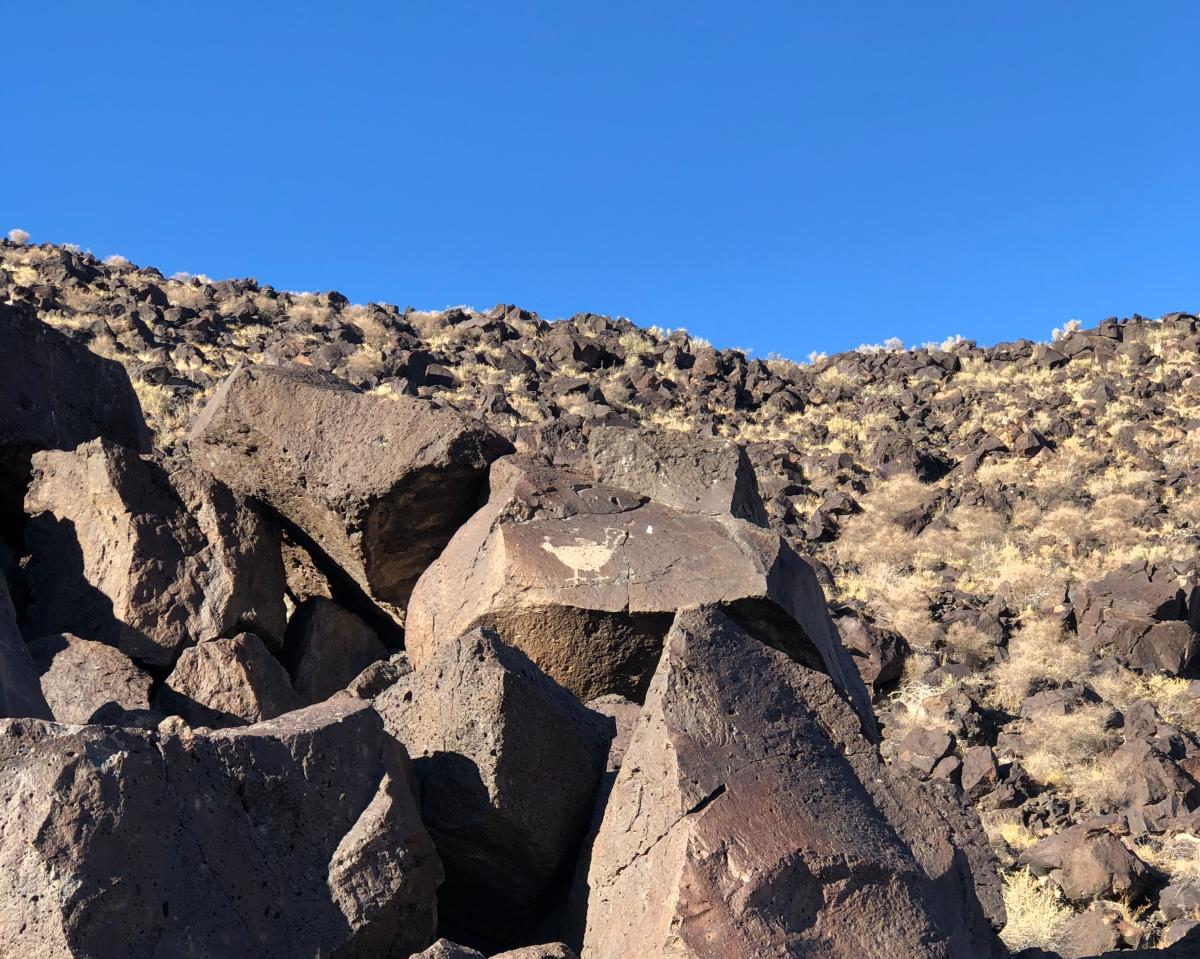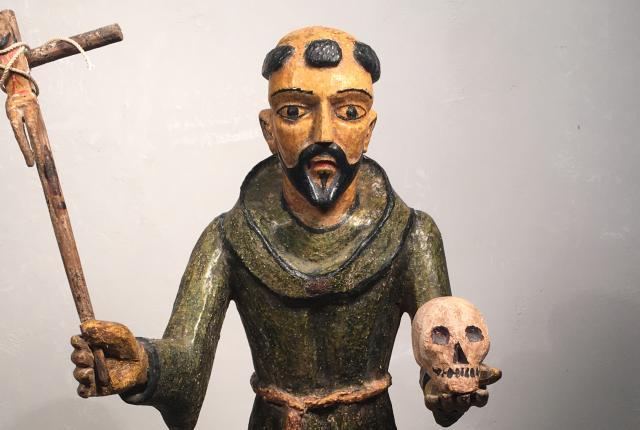A bulto of St. Francis is among the works it be discussed during "Traditions of the Santero" on Saturday. Photograph courtesy of Albuquerque Museum.
Learn how santeros preserve the past.
During the Spanish colonial era, santeros crafted religious artworks using the materials at hand—cottonwood roots, plant pigments, and cowhides. Dive into the carving of bultos, or statues, at 1 p.m. Saturday as conservators Allison Herrera and Keith Bakker discuss the artworks’ significance and how to care for them. Hosted by the Albuquerque Museum and its Casa San Ysidro site, Traditions of the Santero: Bulto Restoration Techniques is designed for artists, collectors, and anyone curious to find out more.
Besides talking about specific pieces from the museum collection, the pair will discuss current trends in conservation. “We don’t ever want to paint over original paint,” Herrera says. “We don’t change the color of anything. We don’t want to affect the artist’s original intent or its history.”
 The New Mexico Farm & Ranch Heritage Museum's Home on the Ranch exhibition explores how the rural Tularosa Basin became a missile range during World War II. Photograph courtesy of the New Mexico Farm & Ranch Heritage Museum.
The New Mexico Farm & Ranch Heritage Museum's Home on the Ranch exhibition explores how the rural Tularosa Basin became a missile range during World War II. Photograph courtesy of the New Mexico Farm & Ranch Heritage Museum.
Hit a new museum exhibit.
Explore life in the Tularosa Basin and the immense changes it has seen from 1940 to now in the exhibition Home on the Ranch: From Ranches to Rockets at the Farm & Ranch Heritage Museum, in Las Cruces. Once a rural farmland, the basin transformed into a missile range during World War II. Some families had to leave their farms with little to no notice.
“We want people to understand what ranch life was like out there, and what happened to folks,” says Leah Tookey, the museum’s curator of history. She worked with Jim Eckles, public information officer at White Sands Missile Range, on the exhibition, which includes replicas of missiles and ranch houses, period-appropriate interactive games for kids, and a rocket-making station. If you cannot visit in person, see the virtual version on the museum’s website.
Visit an art show.
Maja Ruznic, a Bosnian-Herzegovinian artist, creates ethereal figures by painting with pigments and thin washes, then sanding her paintings to remove layers of color and texture. Her newest works are featured in a solo exhibit, In the Sliver of the Sun, at the Harwood Museum of Art, in Taos. A virtual opening reception happens via Zoom at 5:30 p.m. Friday. “I think all of the figures I have been painting the last few months are looking for a sliver of sun,” Ruznic says. “I feel the colors and the way I am applying the paint is acting as kind of an ointment for me. It isn’t intentional, it’s intuitive. There’s a lot of gentleness in the new work.”
Born in a tiny town in Bosnia in 1983, Ruznic and her family fled the country to escape ethnic cleansing and eventually settled in the United States. The sliver of sun Ruznic references in the show’s title speaks to her own internal journey. “The search for that sliver is the reclaiming of scattered pieces of identity,” she says. The show is up through September 26.
 Celtic Fringe performs at Celtic Fest Saturday on the campus of New Mexico Tech. Photograph courtesy of Celtic Fringe.
Celtic Fringe performs at Celtic Fest Saturday on the campus of New Mexico Tech. Photograph courtesy of Celtic Fringe.
Wear something green.
Do a wee jig and celebrate the luck o’ the Irish just before St. Patrick’s Day at Celtic Fest, a drive-in concert, 1–4:30 p.m., Saturday. Hosted by New Mexico Tech’s Performing Art Series, the event features Celtic jams performed by the Irish Setters and Celtic Fringe from the Macey Center parking lot in Socorro. (RSVP by emailing pas@nmt.edu.) The Cubish food truck will dish up shepherds’ pie and bangers and mash (the chef is Cuban and Irish, hence “ Cubish”). Attendees get a menu upon arrival and text to order for carside delivery. You can also enjoy the concert from home, but the cabbage stew is all on you.
 One of the more than 400 petroglyphs you might see hiking the 1.5 mile path in Petroglyph National Monument. Photograph by Steve Gleydura.
One of the more than 400 petroglyphs you might see hiking the 1.5 mile path in Petroglyph National Monument. Photograph by Steve Gleydura.
Hike the Petroglyphs
Centuries ago, Ancestral Puebloans decorated cliff faces and boulders with representations of their lives and culture. Go hunting for some this weekend at the Piedras Marcadas (marked rocks) Canyon Trail at Petroglyph National Monument, on Albuquerque’s west side. The easy 1.5-mile path offers views of more than 400 petroglyphs. You can bring your pups, but they must stay on a leash at all times and you must pick up after them. The trail is open sunrise to sunset. There might be a nip in the air and a bit of a breeze, so dress in layers. Oh—and don’t touch the petroglyphs. The oils from your hands can damage them.


